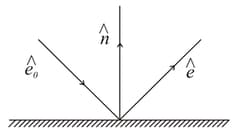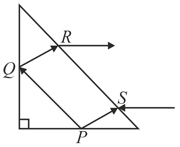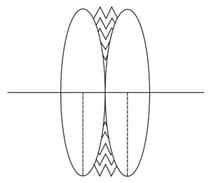Embibe Experts Solutions for Chapter: Ray Optics, Exercise 1: WBJEE 2018
Embibe Experts Physics Solutions for Exercise - Embibe Experts Solutions for Chapter: Ray Optics, Exercise 1: WBJEE 2018
Attempt the free practice questions on Chapter 24: Ray Optics, Exercise 1: WBJEE 2018 with hints and solutions to strengthen your understanding. EMBIBE CHAPTER WISE PREVIOUS YEAR PAPERS FOR PHYSICS solutions are prepared by Experienced Embibe Experts.
Questions from Embibe Experts Solutions for Chapter: Ray Optics, Exercise 1: WBJEE 2018 with Hints & Solutions
A ray of light is reflected by a plane mirror. and be the unit vectors along the incident ray, reflected ray and the normal to the reflecting surface respectively. Which of the following gives an expression for

A point source is placed at coordinates in -plane. A ray of light from the source is reflected on a plane mirror placed along the -axis and perpendicular to the -plane. The reflected ray passes through the point What is the path length of the ray from to
An object, is placed in front of a convex mirror of focal length . A plane mirror is now placed facing the object in between the object and the convex mirror such that it covers lower half of the convex mirror. What should be the distance of the plane mirror from the object, so that there will be no parallax between the images formed by the two mirrors?
There is a small air bubble at the centre of a solid glass sphere of radius and refractive index . What will be the apparent distance of the bubble from the centre of the sphere, when viewed from outside?
A ray of light is incident on a right-angled isosceles prism parallel to its base as shown in the figure. Refractive index of the material of the prism is . Then, which of the following statement(s) is/are true?

A thin convex lens is placed just above an empty vessel of depth . The image of a coin kept at the bottom of the vessel is thus formed above the lens. If now water is poured in the vessel upto a height of what will be the approximate new position of the image? Assume that refractive index of water is .
A point object is placed on the axis of a thin convex lens of focal length at a distance of from the lens and its image is formed on the axis. If the object is now made to oscillate along the axis with a small amplitude of , then what is the amplitude of oscillation of the image?
[you may assume, where
Two identical equiconvex lenses, each of focal length are placed side by side in contact with each other with a layer of water in between them as shown in the figure. If refractive index of the material of the lenses is greater than that of water, how the combined focal length is related to

